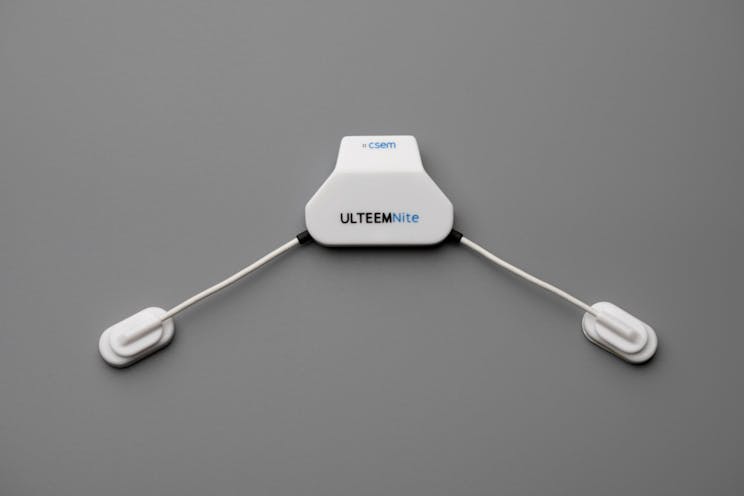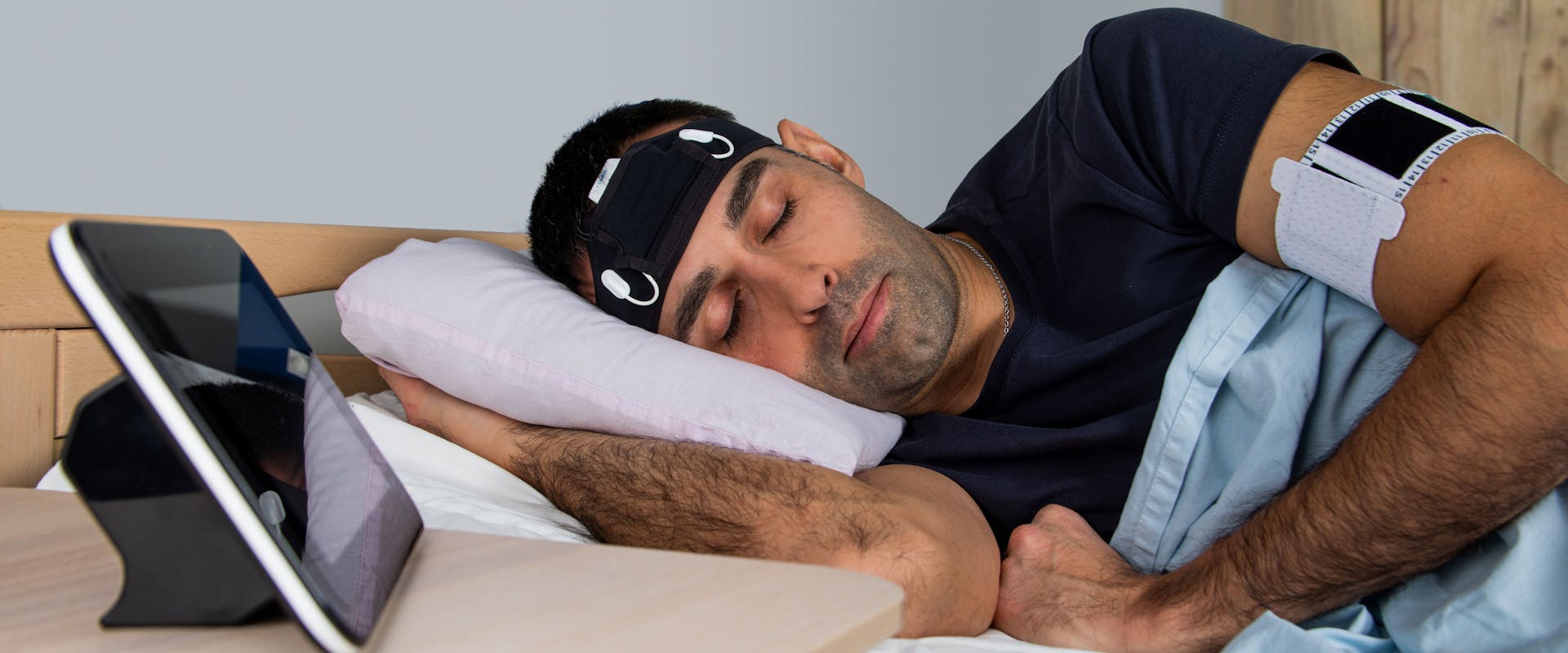
The ULTEEMNite recording system developed by CSEM weighs merely 17 grams.
The second application of the ULTEEM solution focuses on night-time usage, catering to both sleep monitoring and 24/7 epilepsy monitoring. Weighing merely 17 grams (a 5 Swiss franc coin weighs 13.2 grams), the device is seamlessly integrated into a headband worn by patients during their sleep. The solution adheres to applicable medical device standards (IEC 60601-1 and IEC 80601-2-26) and utilizes CSEM’s proprietary dry electrodes to measure electric brain activity between the temples. “Finding a good balance between patient comfort and reliability of measurements is essential to achieve long-term monitoring at home conditions. Our technology simplifies the integration of clinical-grade devices into daily materials such as textiles or glasses frames without any compromise on signal quality”, states CSEM’s project manager Gürkan Yilmaz. The ULTEEM solution’s sensors are powered by a rechargeable battery and communicate with portable devices via Bluetooth™ Low Energy protocol. This allows for real-time visualization of the collected data as well as future data downloads.
The ULTEEM day solution underwent testing with 10 healthy volunteers, while the ULTEEM night solution was tested with 10 patients during a sleep study at the Sleep-Wake-Epilepsy-Center of the Department of Neurology at the Inselspital, University Hospital Bern. The clinical outcomes revealed stable and accurate data recording over a span of 12 hours, with participants finding the device comfortable to wear. The spectrogram analysis displayed clear sleep spindles and slow wave activity, without any interference from power line frequency (50 Hz) eliminating the need for a notch filter.



